Book Reviews by Genre: Humor
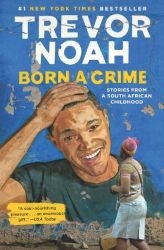
This book is very, very good. While I tend to steer away from biographies and non fiction literature, this book was very interesting and fun to read. Exploring Trevor Noah’s childhood-young adulthood, this book educates its readers on the racial and violent issues that occurred during the apartheid era within South Africa. This book is extremely well written and often times witty. It had me laughing, then crying, then laughing again. I really recommend it!
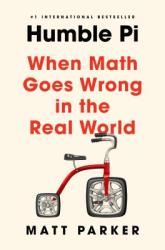
Growing up, I was never the type of kid who complained to my math teacher with the common saying, "When am I going to use this in real life?" Instead, I was always trying to find the weird and fantastical things that made math interesting. Unfortunately, many people get to adulthood and work on important engineering projects having probably asked that "real life" question at some point in their past. Humble Pi is a collection of many such stories of when math goes wrong in real life.
I can appreciate how Parker formatted this book to poke fun at some of the common math errors that have led to real-world situations. Things like the page numbers counting backward, the chapter numbers being poorly rounded, or that there are 314 pages in a book with "Pi" in the title are not lost on me. I had heard of many of these amusing anecdotes about math, but learned plenty of new ones that gave me a good chuckle as simple oversights nearly led to disasters.
My only qualm with Humble Pi is the tonal whiplash of the stories. It's hard to keep laughing about mathematical foibles when every third story is how an error led to the deaths of hundreds of people. These stark reminders of the importance of checking and double checking our calculations were quite sobering. But when the very next story is making light of a fairly innocuous mistake in a jocular manner, it feels a little disrespectful of the people who lost their lives in the previous story (or the next one). Either way, this is an important book to read if you've ever wondered what "real life" math can (and can't) do.
Some amusing and sobering examples of "real life" mathematics, I give Humble Pi 4.0 stars out of 5.
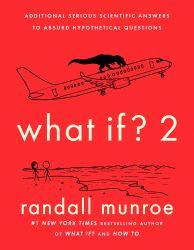
“What If? 2” is a must-have for both information and entertainment! Randall Munroe takes the wildest want-to-know questions from curious minds and presents them with serious — yet hilarious — scientific answers. From filling the solar system with soup to creating raging candy storms, Munroe comically lays out the effects of each silly scenario. Curious minds will devour this book full of the perfect balance of fact and fiction. “What If? 2” finds a whole new purpose for the world of science!
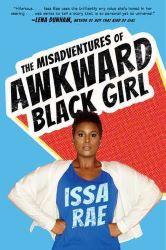
This book follows Issa Rae, a half-Senegalese actress and producer (she was the president in Barbie and also stars in Insecure!). The book follows Issa as she tries to find herself throughout her life because she has always felt awkward and how she has come to terms with herself. This book is extremely funny. While most of the book has humorous undertones, there are sections that are quite serious. Issa Rae writes about her life in an upwardly mobile immigrant family & her painful attempts to be cool. You don't have to be awkward or black to enjoy this book.
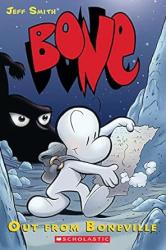
Bone is one of those comics I’ve always been aware of but haven’t gotten around to reading until now. It’s interesting how the visual style of the titular characters evokes an older style of comics, while the other characters in the world feel more modern. The storytelling runs at a pretty fast pace that kept me turning the pages to see what happens next. There’s some pretty good humor here, as well as tense situations to keep it from becoming too silly. I can definitely see the appeal and why it’s been a notable comic since its origins in the early 1990s.
My only qualm with this book has to do with the main characters. The three “Bones” feel out of place in the fantasy realm, let alone our world. It also took me a while to distinguish visually between Fone Bone and Phoney Bone, which was only aided because this book mostly follows Fone. These characters are quite expressive for their simple design, which helps. I understand their simple white design would make producing the (originally black and white) comic easier, but they’re so jarring when everything else is so detailed.
It's funny how the Japanese isekai genre has picked up in recent years, only to have been solidly pre-dated by Bone. The concept of a group of people being transported/lost in an unfamiliar fantasy world is a huge genre today. The fantasy world-building Jeff Smith does in this first volume definitely holds to a lot of fantasy tropes while also taking humorous turns that make the world unique. I’m glad I picked up the colorized version of this first volume and I’ll definitely be reading the next volume when I get the chance.
A bold take on the isekai genre in an American style, I give Bone, Vol. 1 4.0 stars out of 5.
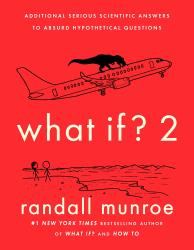
As a fan of XKCD, I've loved the What If? spinoff series despite how irregularly Randall has updated it. Considering there have only been five new posts in the last five years, and they were all in the months leading up to the release of this book, I needed a good dose of What If? Partly because it had been so long since I had read any What If? posts, all the chapters in this book felt fresh and hilarious. Now that I read through it, I'm sad that I'll have to wait another eight years for a third book in the series.
Randall always has a down-to-earth style of describing incredibly complicated scientific concepts. This means What If? 2 is quite educational once you get past the ridiculous premises that readers have sent in. It's also nice how each chapter is easily readable in a few minutes so that I could just pick it up and get a good laugh before moving on to something else. After all, this book is straight-up funny. This should come as no surprise—again—given the absurd questions readers asked Randall.
It felt like this book had more new content than the previous book in the series. This might not be true, but it felt that way because I hadn't read any of the posts that made it into this book in several years. This was my main qualm with the first book: that it was just a printed-out part of the internet. In this sequel, there weren't just new questions answered but also quick little sections that covered easily answerable questions (as compared to its predecessor's highlights of disturbing questions with no answers). Overall, I found it to be a fun read and I'm counting the days until What If? 3 comes out.
Hilarious and scientifically accurate answers to oddball questions, I give What If? 2 4.5 stars out of 5.
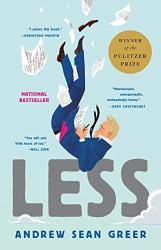
The book Less follows a middle-aged, gay author named Arthur Less, and recounts his loves and losses from a third person point of view. His lover of many years, Freddy, leaves him for a more serious relationship, he goes on a trip around the world partly to avoid Freddy's wedding and his upcoming 50th birthday. The book explores themes such as love, heartbreak, self-doubt, fear of aging, and sexuality. In Less's journey, he discovers that he can't run from his fears by traveling across oceans, he must face them. A Pulitzer prize winner, the language in the book is mature and riddled with literary references spanning throughout history. The author uses many intricate metaphors to describe Less's situation, and then book ends with an incredible twist that will make your jaw drop. I would recommend this book to anyone who likes contemporary literature and wants a meaningful, yet entertaining read.
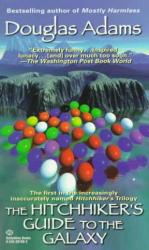
This book is genuinely one of the funniest I’ve ever read. I mean, it’s iconic for a reason! The characters are a hoot, and the world is even more so. The world may be nonsensical and the humor is a little crass, but it adds to the charm in my opinion. It wasn’t a life changing read by any means, but it kept my middle-school monkey brain entertained, and that’s all I can ask for. A must-read for sci-fi and comedy fans alike! (8th Grade)

Small Admissions follows Kate Pearson, right after getting brutally dumped at an airport by her handsome, French, almost-fiancé. After the prodding of friends and family, Kate takes up a job with private school admissions, and is quickly thrown in to a mess of angry parents, bratty kids, scholarship grants, and interview skills. Throughout her journey, Kate and her friends will need to learn to let go, keep going, and grow up.
I love Amy Poeppel's books because each of her characters is so wonderfully flawed that it's a love letter to changing even as an adult. Every character in this book has a lot of issues, ranging between codependency, independency, over-confidence, under-confidence, and all possible maladies in between. This was very annoying in the beginning, but it lended to the catharsis of character development at the end. I never knew I could get so invested in a middle-aged woman making one good decision, but 300 pages of horrible decisions will do that for you! The characters themselves are amazingly vibrant and likable despite their horrible choices. There were a lot of names to remember at first, but each soon became memorable in their own way. They also interacted wonderfully throughout the book. Even though some characters got more time to shine than others, watching them bounce off each other was so fun. In particular, the female relationships in this novel get a lot of time and development, which I appreciate. The writing itself was great, not a ton of prose but very smooth and concise. The themes were phenomenal, and carried through the entire piece. There's a throughline of learning to let go of things you thought you'd always have, and while this at first seems obviously related to Kate's break-up, it applies to practically every character in the novel. People have to let go of jobs, schools, belief, and people, and it really is a love letter to letting yourself change for the better.
All in all, despite some issues with the large number of initially annoying characters, this book is phenomenal! I'd recommend this book to anyone who wants great character growth, a solid story, and a lesson on letting go!
Reviewer Grade: 12
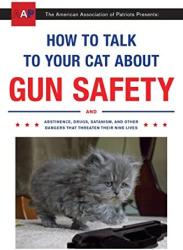
I had seen this book cover on the internet a few years ago and found it to be an amusing concept. When I ran across the paperback version of this book at a thrift store, I bought it and gave it a read. Presented by the fictional "American Association of Patriots," How to Talk to Your Cat About Gun Safety is a satire parody of right-wing and evangelical pamphlets that seek to inform readers of the "right" way to do something. In this case, talk to your cat about gun safety.
This book is actually a collection of a few different pamphlets that cover a variety of topics, including safety for guns, sex, online, and the apocalypse. To its credit, if you didn't realize this was satire, you'd think this book was being serious. Perhaps this is more an indictment of how crazy some people have become since 2016. Unfortunately, this is one of the only gimmicks this book has, and it does it to death. I'm impressed that most of the advice is actually accurate, but that's because it almost reads like a pamphlet you'd hand parents trying to talk to their teenagers and just did a find-and-replace to change "teen" to "cat."
I enjoyed the humor for the first few chapters, but by the end, I was mostly skimming, trying to get through it. There seemed to be a quota of cat puns the author tried to force into this book, with at least one or two of these eye-rolling jokes occurring per page. Since this is the other gimmick this book has, there isn't much more to it than the amusing title and concept.
An amusing satire gimmick, but not much else, I give How to Talk to Your Cat About Gun Safety 2.0 stars out of 5.

Each page of this book was a joy to read, as it gives readers a glimpse into how different cultures affect the children who grow up within them. Trevor Noah is a talented comedian and an even better storyteller. Each narrative in the book felt like I was experiencing the moment with him, as he struggles with his identity in the boundaries of apartheid. The way Noah describes his mother- strong, resilient, yet strict from a place of love- is a very realistic concept that many people don't discuss. Parents aren't perfect and grow with their children, but it's their true intentions that determine whether or not they are really doing what's best for their child. I also found it fascinating how Noah communicates having to choose between two races that he isn't truly apart of. I highly recommend reading Born a Crime because of the lesson that everyone is more connected than they realize, and where you grow up shouldn't restrict who you grow to be.
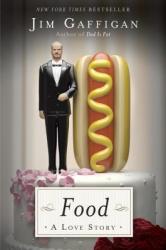
I first read this book after it was recommended to me by a teacher, and needless to say, it instantly became a favorite.
Food: A Love Story is the second hilarious memoir by comedian Jim Gaffigan about - you guessed it - food. It covers the culinary distinctions throughout geographical regions of the United States, the difficulty of eating healthy in a world of delicious junk food, the conspiracy that lead to the creation of the Chimichanga, the shame at eating at McDonalds without children, and more. This book has it all. I highly recommend this book to anyone and everyone who wants a good laugh.
Reviewer grade: 9
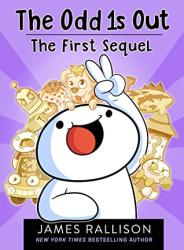
If you have read my first review, then you now that this sequel was a wish come true. I say this because I was so excited to have more stories from James Rallison in the first place, which I did not see coming. I am choosing one story to talk about in this review and that story is the missing mattress. He starts talking about how he isn't the "let me speak to your manager," type. This sets up the story pretty well because it gives that little bit of foreshadowing that makes you want to keep reading. The next thing that happens is that the movers don't bring his mattress from his old apartment to his new house, and they apparently have no idea where it is. He checked his account were all of the pictures of his stuff that needed to be moved had been posted, and lo and behold, his mattress wasn't there. He decided to call customer service and see if his mattress was on his friend's account and the other person on the phone asked him to describe it to confirm it was his. Normally he is an expert at mattress description, but today he was drawing a blank, so he just asked whether or not there were two mattresses in his roommate's account. Sadly he/she, couldn't, "disclose that information." Because of this, he attempted to fairly describe it and they said that they had a mattress that fit the description he gave. They said that they would move it to his account if it was his, but just to be safe, he called his roommate to look at his account and he said it only had one mattress in it, so he assumed they moved his mattress back to his account. He checked his account the next day and, NO MATTRESS. He filled out a missing item form on the website and still 2 days later, no mattress. He was going to have a guest room in his house, so he decided to just buy his guest bed and mattress now. The company finally found his mattress a week later, and he returned with a passport, a suntan, and passable Spanish.
I liked how the author made a sequel because it gave me even more hilarious stories to enjoy before I fell asleep at night. I didn't dislike anything about this book per say, but as I said before, I do wish there were even more stories. When you finish it, it is almost like a disappointment, and you just decide to read it again. I chose this because I had already read, and thoroughly enjoyed, the first one. It wasn't predictable because you can't really predict a book that is full of different stories with each of them having their own little plot. I would recommend this book to anyone who possesses the ability to read and enjoys a good laugh.
Reviewer Grade: 8
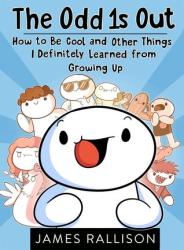
Diving straight in, this book isn't a single story. It is actually a collection of stories from James' childhood that are about, of course, "How to be cool and other things that I definitely learned growing up." As to not give too many spoilers, I will only give the premise of one of my favorite stories in the book, Harry the Moth. Harry is a White Lined Sphinx Moth that was hanging out on their porchlight when the door opened, and he was drawn into their house. James and his twin sister Faith find him hanging out on the windowsill, put him in a jar, and they decide to keep him as a pet. Back when James thought his mom had good ideas, he listened to her suggestion that he should take Harry to his kindergarten class so he could be the class pet there. The teacher realized that having a class pet with a lifespan shorter than a year would be a bad idea, so she decided to release him a recess so they all could learn about nature. This was also back when he thought his teacher had good ideas, so they released the moth, and he had a great life left. 10 seconds. Those moths were probably supposed to only come out at night, so it flying around in an open space during the day gave the birds a free excuse to eat it. I guess this story is to show how James learned not to think that his mom and teacher had good ideas and never to release moths during the day. All the stories have little bits of funny wit and irony that make it a good read.
I liked this book because it gave me even more comics and stories from the Youtuber and Cartoonist, James Rallison. The only thing that I didn't like about this book was that it wasn't longer! Every single story in there is so good that when you finish, you just want more. I chose this book because, as I said before, I had seen James' YouTube videos and I wanted to read more of his stories from his childhood. This book wasn't predictable as it didn't have one story to follow so it meant that it took lots of twists and turns that were interesting to read. Based on all of this, I think this is one of the best books that I have read this year and would recommend it to anyone.
Reviewer Grade: 8
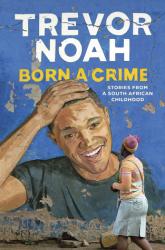
This story explains what it was like to be born a crime. Trevor Noah is the child of a South African mother and a European father, which in South Africa, was illegal. Trevor has to learn how to stay positive with a racist government in control. This book does an excellent job explaining what it was like to grow up during Apartheid. Overall, I really enjoyed reading this book because despite the bad circumstances, this book made me laugh a lot.

Over time, I've found Bill Bryson's books are hit-or-miss for me. I enjoyed his memoir about childhood, The Life and Times of the Thunderbolt Kid , and it was A Walk in the Woods: Rediscovering America on the Appalachian Trail that introduced me to Bryson in the first place. However, since then, I've struggled to find something that's lived up to those two books. At Home: A Short History of Private Life came close, but I was really turned off by I'm a Stranger Here Myself: Notes on Returning to America After Twenty Years Away. Ultimately, I hoped Neither Here Nor There would fit the bill, but it disappointed me once again.
Perhaps Bryson's travels in Europe weren't interesting to me because I haven't been over there myself. Most of the details in this book felt like they would only be understood by someone who knew what Bryson was talking about because they had experienced the same thing. I did appreciate the dueling retrospective look at Bryson's life between his younger days to when he was older and wiser, but most of the focus seemed to be on remembering when he was a young man (and all the negative foibles that come with it).
In the end, Neither Here Nor There doesn't really have anything to say. The author went to Europe and visited the same places twice. That's it. For those looking for some deep philosophical examination of Europe or a comparison of how it's better/worse when compared to the United States, you might end up being disappointed. Sure, there's some of that in here, but it's so light that it merely glances off the main plot of the literal traveling of Europe. It probably doesn't help that much of the humor in this book hasn't aged well either.
Bill Bryson's travel log from his trips to Europe, I give Neither Here Nor There 3.0 stars out of 5.

After reading If I Understood You, Would I Have This Look on My Face? , I decided to add some other Alan Alda books to my reading list. Months later, I finally got around to listening to the audiobook for Things I Overheard While Talking to Myself. I appreciate that Alda was the narrator, as he already has such a great voice for narration. That being said, there are a few aspects of this book that were likely lost in the translation to audiobook format.
As a celebrity, Alan Alda was invited to speak at many graduation ceremonies for many decades. This book is a collection of some of the speeches he gave at these events. While there are certainly gems of wisdom spread throughout this book, many of the same points are reiterated from speech to speech, making it slightly repetitive after a while. Also, if you don't happen to agree with some of his political views, you might not find some of the speeches particularly interesting. Despite all this, if you can glean some useful advice out of these speeches, then it was worth the read.
One thing I had trouble distinguishing in the audiobook version was where the speeches started and ended and where Alda's reflections and asides started. I would occasionally notice an echo in the recording, which likely indicated that it was one of his speeches. I think the echo was trying to replicate the sensation of listening to Alda in a large space (like the ones used for graduations), but it was so faint as to be indistinguishable from the rest of the book. I appreciate the attention to detail, but it could have been a little stronger.
Some useful graduation advice from Alan Alda, I give Things I Overheard While Talking to Myself 3.5 stars out of 5.
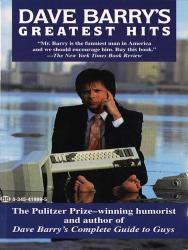
Dave Barry’s slapstick comedy has never been funnier than it is in Dave Barry’s Greatest Hits. It is filled with the funniest columns of his career, and they are certain to please. Barry’s style of humor will make even the sternest of audience chuckle, and it is sure to brighten your day. I enjoyed this book very much, and it has helped me through some stressful times. I would recommend it to anyone in need of a pick me up, or just looking to have a couple laughs.
Reviewer's Grade: 11
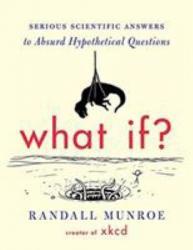
What If? by Randall Munroe is an amazing series of completely impossible and extremely strange scientific questions that are answered with complete scientific accuracy, and a bit of humor. Munroe takes questions people ask over the web and applies physics, chemistry, and other sciences to answer the questions. One of my favorite hypotheticals is what would happen if everybody pointed a laser pointer at the moon? Munroe approaches this by slowly increasing power, until the moon’s surface explodes, and it propels itself away from earth. The hilarious and entertaining questions can provide fun for anyone with an interest in science, and I would recommend it to anyone who’s thought of an impossible hypothetical question.
Reviewer Grade: 11
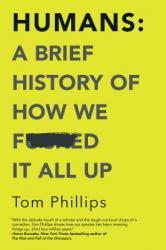
A thoroughly entertaining account of how far modern humans have come and how often they messed it up in groan-worthy ways despite best intentions. Journalist and humor writer Tom Phillips relies on sound scholarship to inform, entertain and maybe demoralize (in a funny way) the reader. Examples run the gamut from a Chinese emperor who stored gunpowder in his palace then hosted a lantern festival, the inadvertent forensics pioneer/lawyer defending an accused murderer who proved to the jury that the victim may have accidentally shot himself by accidentally shooting himself, the Austrian army that attacked itself one drunken night, and other equally spectacular blunders of modern times.
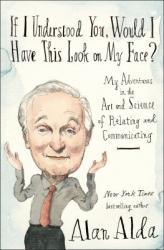
***THIS BOOK WAS RECEIVED FROM A GOODREADS GIVEAWAY***
While miscommunication might be the source of conflict for romantic comedies, it’s a much more significant problem in the real world. If people aren’t able to efficiently and accurately communicate with their fellow man, then we all have room for improvement. Scientists and doctors are often the worst offenders, even though their ideas need to be communicated to the world for the advancement of society. Alan Alda has spent years trying to figure out why people are unable to communicate, and he has also figured out what we can do to improve this situation. As a scientist and writer, I feel many of his insights have merit.
I grew up watching Alan Alda on Scientific American Frontiers, so I know how often he has interacted with scientists. His conclusions that we can all become better communicators through empathy and understanding of our audience makes sense. I dabbled in improvisational theatre a little in college as I was studying to earn my Masters in Mechanical Engineering. Having first-hand experience of successfully improvising, I always touted its benefits for technical professions. Now I know why. When we synchronize with others, our message has a much better chance of being communicated.
As if to prove his point, this book is not necessarily a scientific account of the research, but merely a personal (and relatable) set of anecdotal stories that should open people’s eyes to the potential communicators trapped within each of us. We all have to communicate on some level, whether it’s orally or written, so if we can all improve our communication skills by learning to empathize with others, maybe society could one day be able to hold civil and vigorous debates without instantly devolving into mud-slinging contests.
A must-read for anyone who communicates (i.e., everyone), I give If I Understood You, Would I Have This Look on My Face? 5.0 stars out of 5.
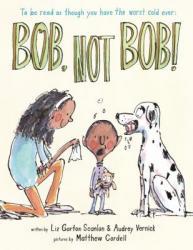
For the parent, teacher or librarian who loves a good read aloud that can only be done with "the voices" - this is your book. A boy with a cold in his head calls for his mom, but it sounds like "Bob," and of course his dog, Bob, comes running instead. Hilarious situations will tickle reader and listener alike in Bob, Not Bob! by Liz Garton Scanlon and Audrey Vernick with pictures by Matthew Cordell. For ages 3 - 7.
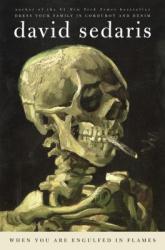
David Sedaris truly does not disappoint in his autobiography, When You’re Engulfed in Flames. The way that he is able to express himself while being true to his own story is amazing. He takes a normal self-discovery story and adds enough detail and personal insight, that it makes it one of the most entertaining books that I have ever read. I can see, however, that this is not the book for everyone. It uses quite a bit of vulgar language, discusses about adult topics, and talks about multiple controversial subjects (political subjects in our nation). It has a very liberal feel, and would most likely not appeal as much to strict conservatives. But, nonetheless, a book is a book, and this one was extremely well written and hilarious. I had to bite my lip to keep from laughing out loud in quiet environments. The wit that David Sedaris has is impeccable and one of a kind and constantly present throughout the book.
I initially picked up this book because it was given to me as a gift. The gift giver had not read the book but had just seen the exquisite artwork on the cover and knew it was going to be good. Since then, I have recommended this book to so many who want a quick, funny, uplifting read. And that is why I recommend this book to anyone who enjoys reading self narratives with a humorous twist.

Trevor Noah's autobiography, which focuses on his childhood in South Africa, gives audiences a funny yet insightful look into life in South Africa before and after apartheid. The book is also a compelling mother-and-son love story. Noah's astute and comedic storytelling makes "Born a Crime" is a very smart and enjoyable read.

Of course I loved this book since I too work in a public library. Most of the stories, I have experienced from time to time. And could probably add a few! But I am so glad, that no one has ever taken off their shoe and asked me if their foot was inflamed or infected!! LOL! Now that I have said this, it is probably going to happen. But anyway, this is a great book for anyone who wants to know what it is like to work in a public library. Along with the crazy, funny stories, there are some nice ones where someone's life was changed for the better because of the library. That makes the job at the Reference Desk worth it!

This book takes a look at the lives of the early Puritans that crossed over to make a better life for themselves in America. While that topic doesn't immediately scream, "Read me!" I was forced to read it for school, and I actually really enjoyed myself. The author, Sarah Vowell, has this dry sense of humor that makes her long explanations about the technicalities of the religion and of how society worked back then interesting while still informing you of the topic and the message she is trying to put across. I think whether I would recommend this book depends on who wants to read it. If you are someone who is looking for a non-fiction novel that gives a different perspective to what is generally taught in history classrooms, I say go for it. If not, you might still enjoy it simply because the author is hysterical, but that might not be the case if you are not interested in learning about the actual topic.
Reviewer: Grade 11

Fans of Vardalos get a behind the scenes look at her (generally not-so) glamorous Hollywood life -- and a personal tale about her struggles with infertility and foster-adoption that transformed her in to the "Instant Mom" of the title. While most parents on this journey don't have to negotiate with the entertainment press, Nia's story is funny, sweet, and deeply relatable. She is currently an Adoption Ambassador for the Adoption Council of Canada (and the book does include some information for those starting their family adoption journey) but the story stays close to home, close to the heart, and is a charming personal tale of her family's origins.
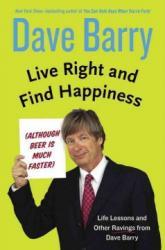
I grew up on the humor writings of Dave Barry. Each week I’d take his humor
column to school and read it to my friends during my lunch break, laughing at
his comedic style and funny topics. Consequently, I found myself enthralled
by his books, each one leaving me in stitches due to his observational humor
of the weird world around us (or at least around Miami, Florida). I was
saddened when he decided to retire from writing these weekly humor columns.
As such, each time he releases a new book full of his writings (mainly essays
now), I usually pick it up out of habit.
While I can usually blow through one of Dave Barry’s books in a couple
hours, I’m finding that I’m not nearly as amused as I used to be. It
could be that I’ve grown up a bit and no longer find boogers as funny as I
once did, but I think the issue lies at a deeper level of Dave’s writing.
Where his previous books written during his heyday were all essentially
centered around a common theme (Cyberspace, Japan, Aging, Home Repair, etc.)
recently his books have been whatever he’s done most recently. The problem
this creates is that each of the individual essays of the book is disjointed
from all the other ones.
Essentially, even though it would mean a much longer hiatus from Mr.
Barry’s humorous writing, I would enjoy his “themed” essay collections
more than the ones he’s put forward in most recent three books. In fact, he
could probably categorize them into three different books about international
travel, teenage daughters, and current homeland topics. As it is right now,
I’ll probably still buy Dave Barry’s books, but I’m not laughing as
much as I used to.
Another adequate collection of humorous essays by Dave Barry, I give Live
Right and Find Happiness 3.0 stars out of 5.
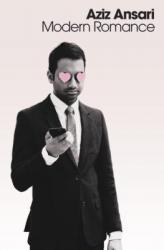
I was honestly surprised by this book. As has been the case with most
comedians and the books they have written, I expected this to be a bit of an
autobiography in the veins of Bossypants , Yes Please , The Bassoon King: My
Life in Art, Faith, and Idiocy , and Is Everyone Hanging Out Without Me?
Instead, I was presented with a book filled with data, analysis, and
information about how modern relationships work when compared with the
relationships of past generations. Having gone through some of this “Modern
Romance” myself, I could certainly relate to the information being
presented, nodding my head in agreement as things I noticed suddenly had
explanations pinned to them.
But it wasn’t that the book was not an autobiography that surprised me, it
was the humorous way that Aziz Ansari managed to present this subject matter,
while also maintaining high scientific rigor. If I were to put this in a
category of non-fiction humor, it would probably be in the vein of I Am
America but without the tongue-in-cheek satire. Maybe I’m even wrong in
this characterization and it should fall under the collections of humor
around a single topic, like the works of Dave Barry. Either way, this book
was informative and not judgmental in the slightest. It was merely presenting
the facts that had been discovered, but in such a way that made me laugh
about the whole situation.
For those people who are in relationships, want to be in relationships, or
who just want to play the singles game, this book is an optimistic look at
what has changed, what is likely becoming the “norm”, and what we should
all expect from relationships in the future. Simply put, the smartphone has
complicated the world of romance, but it has also given a lot of benefit to
those who know how to use it as a tool to get what they want out of life. I
would almost encourage Ansari to continue writing books like this, because
his humor has made a somewhat dry subject a lot more palatable.
A great book that explores why the dating scene is so different now, I give
Modern Romance 4.0 stars out of 5.
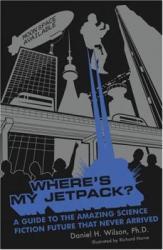
Some of the best science fiction ever written was strangely prescient with its predictions on how the world would advance, technologically. One of the best examples of this was Jules Verne in his story From the Earth to the Moon. Not only did he figure out what it would take to get away from Earth’s gravity, he predicted that the launch site would be in Florida. Ever since then, we have looked to the authors of science fiction to tell us what could be possible in the future of tomorrow.
Unfortunately, some of these predictions weren’t quite realistic. While jetpacks and moon colonies sound cool in the pages of a fictional book, they just aren’t practical in reality. Still, our childlike wonder and innovation tried its best to create what the science fiction authors of yore dreamt up. In Where’s My Jetpack?, Daniel H. Wilson does his best to explain where all these fantastical inventions and concepts are in their process toward being fully realized. But don’t worry about this being a stuffy tome full of complicated science. Wilson does a good job infusing humor with his research, which helps to show how ridiculous some of these ideas really are.
My one challenge with this book came with the fact that it was published back in 2007. It’s been 10 years since this book came out and now much of its research is either naively optimistic or didn’t pan out. What’s perhaps even more exciting is being aware of the technological developments that have made some of the impossibilities mentioned in this book at least somewhat plausible. Consequently, it’s best to read this book as a snapshot in the technological timeline that is our current reality.
A humorous look at the amazing technological developments inspired by sci-fi, I give Where’s My Jetpack? 4.0 stars out of 5.
For more reviews of books and movies like this, please visit www.benjamin-m-weilert.com